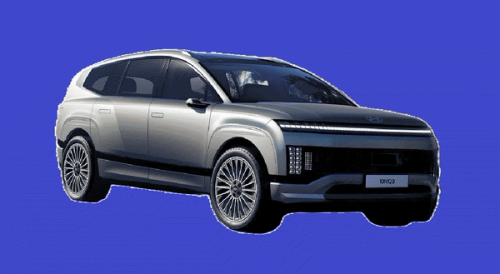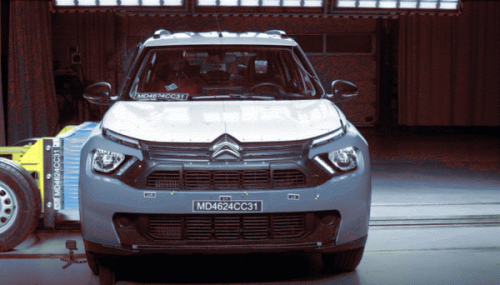Over-the-Air Updates: Transforming the Automotive Experience
20 Nov 2024
9
By chronicle tech

Over-the-air update , Source: Tesla
The automotive industry is undergoing a digital renaissance, and over-the-air (OTA) updates are at the forefront of this revolution. Once the domain of smartphones and laptops, OTA technology has seamlessly integrated into vehicles, transforming them from static machines into dynamic, upgradeable platforms.
With major automakers like Tesla pioneering the trend and competitors rushing to catch up, OTA updates are reshaping the way we think about vehicle ownership, software, and even the business model of the automotive industry.
Tesla: The OTA Trailblazer
Tesla’s approach to OTA updates is arguably the gold standard. The company introduced the concept of remote updates to the mass market, fundamentally changing how consumers view their vehicles.
With OTA updates, Tesla owners have seen their cars gain features such as improved battery range, performance enhancements, new driving modes, and even entertainment upgrades like integrated streaming apps. Notably, the 2020 rollout of the Full Self-Driving Beta was entirely software-based, demonstrating how OTA updates can deliver groundbreaking advancements without requiring a trip to the dealership.
The New Standard in Automotive Software
What Tesla started, other automakers are now rapidly adopting. Brands like Ford, General Motors, and Mercedes-Benz have launched OTA capabilities across their latest models, allowing vehicles to stay current with the latest software and features.
For instance:
- Ford’s Power-Up updates for the Mustang Mach-E introduced new drive modes and gaming options.
- BMW offers a subscription-based approach to features like heated seats or adaptive cruise control, allowing customers to unlock these features on demand.
- Volkswagen uses OTA updates to refine its ID. series EVs, addressing early software bugs and enhancing user interfaces.
This shift is redefining the car as a service-first product. Automakers no longer need to create new hardware models to introduce better features, reducing production costs and streamlining the customer experience.

OTA updates , Source: Volkswagen
The Future: Post-Purchase Features and Customization
One of the most exciting implications of OTA updates is the ability to add features post-purchase. Vehicles are increasingly being sold with dormant hardware that can be activated through software.
Imagine buying a car with the option to upgrade later:
- Unlocking performance boosts for highway driving.
- Subscribing to advanced safety features like lane-keeping assist.
- Adding entertainment packages for road trips.
While this creates immense flexibility, it also raises questions about the ethics of withholding features from buyers unless they pay extra. BMW’s subscription model for heated seats, for example, sparked significant backlash. Consumers questioned whether such essential features should be bundled as standard rather than gated behind a paywall.
Security and Reliability Concerns
As transformative as OTA updates are, they introduce critical challenges, particularly around security. Automakers are effectively connecting millions of vehicles to the internet, creating potential vulnerabilities for hackers.
High-profile incidents, such as Jeep’s 2015 hack where attackers remotely disabled a vehicle’s brakes, underscore the importance of cybersecurity. Automakers are now investing heavily in securing their OTA systems with advanced encryption and multi-layered defense mechanisms.
Reliability is another key concern. A botched OTA update could render systems unusable, as seen in cases where software glitches affected infotainment systems or temporarily disabled vehicle functions. Automakers must ensure robust testing protocols to prevent such disruptions.
Why OTA Updates Matter for the Automotive Future
OTA updates are more than a convenience—they’re a fundamental shift in how we interact with vehicles. They democratize access to the latest innovations, reduce maintenance costs, and extend the lifecycle of vehicles by ensuring they remain relevant years after purchase.
As the automotive world transitions to electric and autonomous driving, OTA technology will be a key enabler. The ability to remotely upgrade battery efficiency, fine-tune self-driving algorithms, or introduce new safety protocols will define the success of tomorrow’s vehicles.
Final Thoughts
The advent of OTA updates marks the convergence of the automotive and tech industries. As vehicles become smarter and more connected, the lines between carmakers and software developers are blurring.
For consumers, this means more personalized, efficient, and cutting-edge driving experiences. But it also requires careful consideration of data privacy, subscription models, and the risks of an increasingly digital ecosystem.
OTA updates are not just about keeping vehicles current—they’re about driving the future of mobility itself. The road ahead is digital, and with OTA technology leading the charge, it promises to be an exhilarating journey.








